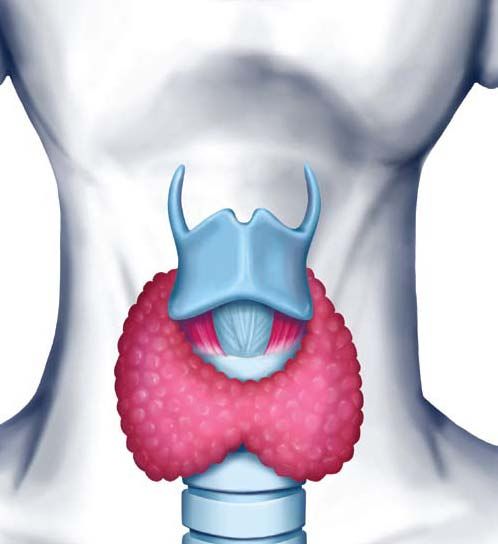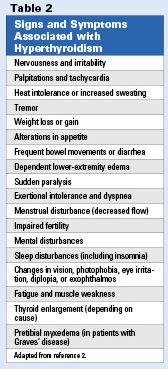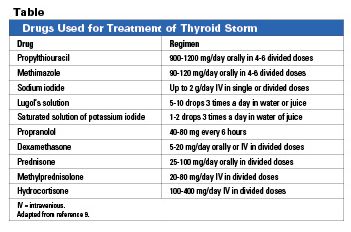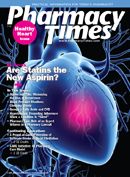Publication
Article
Pharmacy Times
Pharmacotherapy of Thyroid Disorders in Health Systems
The pharmacotherapy of thyroid disorders is complex. Health systems need to ensure that appropriate medications are available on formulary to treat both the acute and chronic states of hypothyroidism and hyperthyroidism.
Dr. Lee is an assistant professor of medicine at New York Medical College and clinical pharmacy manager in infectious diseases with Cardinal Health at Westchester Medical Center in Valhalla, New York. Dr. Pham is an assistant professor of pharmacy practice at Western University of Health Sciences, College of Pharmacy, in Pomona, California.
Clinical practice guidelines have been adopted by the American Thyroid Association1 and the American Association of Clinical Endocrinologists2 for the evaluation and treatment of patients with hypothyroidism and hyperthyroidism. The treatment of thyroid disorders differs slightly, depending on whether the disease presents acutely or chronically.

Hypothyroidism
Hypothyroidism results from inadequate secretion of thyroid hormones, which virtually alters the function of every organ system.3 The typical nonspecific signs of hypothyroidism include fatigue, cold intolerance, weight gain, constipation, dry skin, brittle nails, hoarse voice, hair loss, and overall body aches.
Levothyroxine sodium is the drug of choice for thyroid replacement,2-4 because it is chemically stable, free of antigenicity, has a long half-life, and is relatively inexpensive.3 Dosage must be carefully adjusted according to individual requirements and response.2
The average daily dose of levothyroxine in adults up to 50 years of age is 1.6 mcg/kg of actual body weight (100-125 mcg/day for a 70-kg adult). 2,5-7 Levothyroxine requirements change with age, preexisting cardiovascular disease, long-standing hypothyroidism, and pregnancy.
Parenteral levothyroxine sodium is available and is usually reserved for patients with myxedema coma, the condition caused by acute hypothyroidism. Intramuscular injection is discouraged, because absorption is variable. Intravenous doses should be half the oral dosage, because oral doses are only absorbed approximately 40% to 80%.8

Hyperthyroidism, also known as thyrotoxicosis, occurs when tissues are exposed to excess thyroid hormone.9 The most common cause of hyperthyroidism is Graves’ disease,9-11 an autoimmune disorder that produces antibodies against thyroid-stimulating hormone (TSH) receptors.8,10,12 This process stimulates the thyroid gland to synthesize and secrete excess thyroid hormones (thyroxine [T4] and triiodothyronine [T3]).8,11 Table 1 lists other causes of hyperthyroidism.
Signs and symptoms of excess thyroid hormone are dependent on the patient’s age, duration of illness, and extent of hormone excess in the circulation. 2,8,12 These signs and symptoms are listed in Table 2.

When evaluating patients for hyperthyroidism, a thorough physical assessment should be obtained, including weight and blood pressure, pulse rate, and cardiac rhythm, cardiovascular examination, thyroid palpation and auscultation (for size, nodularity, and vascularity), as well as neuromuscular, eye, skin, and lymphatic examination.2
In addition to the physical examination listed above, laboratory tests must be performed to confirm the diagnosis of hyperthyroidism. Laboratory abnormalities include decreased TSH levels (<0.25-6.7 mIU/L), high levels of free T4 (>0.8-1.5 ng/dL), high levels of T3 (<22%- 34%) (determined by resin uptake), and high levels of radioiodine uptake.9
The primary goals of treatment for hyperthyroidism are to eliminate excess thyroid hormone and minimize the long-term consequences of hyperthyroidism. 9 Treatments include antithyroid medication, radioactive iodine (RAI), and surgery.2,8-10 Beta-adrenergic blockers are used to provide symptomatic relief.9,12
The approved thionamides include propylthiouracil (PTU) and methimazole (MMI).2,9,12 These medications prevent the “organification” of iodine into iodotyrosine and iodothyronin. They also block the coupling reaction of monoiodotyrosine and diiodotyrosine to produce T4 and T3, thus effectively preventing synthesis of thyroid hormone.9 Additionally, PTU, but not MMI, inhibits peripheral conversion of T4 to T3.9
Initial PTU doses range between 300 and 600 mg daily (maximum daily dose = 1200 mg). Initial doses of MMI, which is 10 times more potent than PTU, range between 30 and 60 mg daily (maximum daily dose = 120 mg).9,12 Although these medications are traditionally divided into 3 to 4 doses daily, they may be administered as single doses.9 Clinical improvement is usually observed at 4 to 8 weeks, at which time the dose should be tapered on a monthly schedule.9 Typical maintenance doses for each medication are 50 to 300 mg for PTU and 5 to 30 mg for MMI. Treatment should be continued for 12 to 24 months if the goal is to achieve lifelong remission.9
Radioactive Iodine
In the United States, RAI is the treatment of choice for patients with Graves’ disease. Most patients become hypothyroid, requiring lifelong exogenous thyroid hormone.2,8,9,11 RAI is considered to be safe and can be used in women of childbearing age but not during pregnancy (because of risk for thyroid ablation in the fetus). Also, women should be advised to wait at least 6 months after treatment with RAI if planning for a family.2 The usual initial dose of RAI (131I) is a single dose of 5 to 15 mCi.9 Patients who remain hyperthyroid after RAI may need to repeat the treatment within 6 months.9
Surgical removal of the thyroid gland is no longer the preferred intervention for hyperthyroid patients.2 Surgery is reserved for patients with suspected thyroid cancer, pregnant women intolerant to antithyroid drugs, and those refusing RAI.2 Candidates for surgery are required to take antithyroid medications (PTU or MMI) for 6 to 8 weeks, or until euthyroid.9,12 This is followed by the administration of iodides (500 mg/day) for 10 to 14 days before the surgery to decrease the vascularity of the tissue.9
Propranolol is also recommended when preparing for thyroidectomy and to be continued for 7 to 10 days postsurgery to decrease beta-adrenergic activity.9 Levothyroxine may be added to provide stabilization during the euthyroid state.9
Beta-adrenergic Antagonists
Beta-adrenergic antagonists are widely used as adjuvant therapy for those on antithyroid medications because of their ability to relieve symptoms associated with hyperthyroidism as listed in Table 2.2,8,9,11 Of the beta-blockers, propranolol and nadolol have an additional benefit by blocking peripheral conversion of T4 to T3, although any beta-blocker can be used.8,11,12
Most patients find symptomatic relief with propranolol doses 20 to 40 mg (administered 4 times daily). Younger patients may require larger doses due to an increased medication clearance.9 Adherence may be improved by using agents only requiring once-daily dosing (ie, nadolol [80 mg] or atenolol [50-100 mg]).12
Thyroid storm is a severe, life-threatening form of thyrotoxicosis that develops as a result of a precipitating event, most commonly infection.8,11,12 Other causes include trauma, surgery, cerebrovascular accident, recent withdrawal from antithyroid treatment, or post-RAI therapy.4,8,9,11,13 Thyroid storm requires hospitalization. Mortality in these patients ranges from 20% to 50%, even if treated.8,9
When treating patients with thyroid storm, it is critical to prescribe in the following step-wise fashion to prevent worsening of symptoms: (1) antithyroid medications, (2) beta-blockers, (3) corticosteroids, and (4) treatment of associated complications.8,9,11
Thionamides are used to rapidly eliminate symptoms of thyroid hormone activity. Immediately following is the administration of iodide, which will help block secretion of prestored hormones in thyroid glands.9,11 If iodide is administered prior to thionamides, it may cause more synthesis and release of thyroid hormones. 8,11,12 Beta-blocking agents should be added to reverse the adrenergic effects in high doses. Corticosteroids have the ability to block peripheral conversion of T4 to T3, although adrenal insufficiency does not seem to play a role in crisis.8,9,11 After all of these medications are initiated, supportive treatment may still be necessary.8,9,11
How Health Systems Choose Medications for Formulary
Medications selected for health systems formularies need to include an array of chronic and acute medications for hypothyroidism and hyperthyroidism. For chronic hypothyroidism, oral levothyroxine sodium is the drug of choice. In patients with chronic hyperthyroidism, PTU, MMI, RAI, and propranolol are necessary. For myxedema coma, intravenous levothyroxine should be included on the formulary. For thyroid storm, the use of corticosteroids needs to be considered.
Conclusion
The pharmacotherapy of thyroid disorders is complex. Health systems need to ensure that appropriate medications are available on formulary in order to treat both the acute and chronic states of hypothyroidism and hyperthyroidism. â–



References
1. Singer PA, Cooper DS, Levy EG, et al. Treatment guidelines for patients with hyperthyroidism and hypothyroidism. JAMA.1995;273(10):808-812.
2. Baskin HJ, Cobin RH, Duick, DS, et al. American Association of Clinical Endocrinologists medical guidelines for clinical practice for the evaluation and treatment of hyperthyroidism and hypothyroidism. Endocr Pract. 2002(6);8:457-469.
3. Reasner CA, Talbert RL. Thyroid disorders. In: Dipiro JT, Talbert RL, Yee GC, Matzke GR, Wells BG, Posey LM, eds. Pharmacotherapy: A Pathophysiologic Approach, 5th edition. New York: McGraw-Hill; 2002:1359-1378.
4. Dong BJ. Thyroid disorders. In: Young LY, Koda-Kimble MA, eds. Applied Therapeutics: The Clinical Use of Drugs, 6th edition. Vancouver: Applied Therapeutics Inc; 1995:47.1-47.28
5. Mandel SJ, Brent GA, Larsen PR. Levothyroxine therapy in patients with thyroid disease. Ann Intern Med. 1993;119(6):492-502.
6. Burmeister LA, Goumaz MO, Mariash CN, Oppenheimer JH. Levothyroxine dose requirements for thyrotropin suppression in the treatment of differentiated thyroid cancer. J Clin Endocrinol Metab. 1991;72(2):1189-1194.
7. Fish LH, Schwartz HL, Cavanaugh J, Steffes MW, Bantle JP, Oppenheimer JH. Replacement dose, metabolism, and bioavailability of levothyroxine in the treatment of hypothyroidism. Role of triiodothyronine in pituitary feedback in humans. N Engl J Med. 1987;316(13):764-770.
8. McKeown NJ, Tews MC, Gossain VV, et al. Hyperthyroidism. Emerg Med Clin North Am. 2005;23(3):669-685.
9. Dipiro, JT, Talbert RL, Yee GC., et al. Pharmacotherapy: A Pathophysiologic Approach. 6th ed. New York: McGraw-Hill; 2005:1371-1405.
10. Woeber, KA. Update on the management of hyperthyroidism and hypothyroidism. Arch Fam Med. 2007;9(8):743-747.
11. Nayak B, Burman K. Thyrotoxicosis and thyroid storm. Endcrinol Metab Clin North Am. 2006;35(4):663-686.
12. Franklyn, JA. The management of hyperthyroidism. N Engl J Med. 1994;331(8):1731-1738.
13. Kearney T, Dang C. Diabetic and endocrine emergencies. Postgrad Med J. 2007;83(976):79-86.
14. Kadmon PM, Noto RB, Boney CM, et al. Thyroid storm in a child following radioactive iodine (RAI) therapy: a consequence of RAI versus withdrawal of antithyroid medication. J Clin Endocrinol Metab. 2001;86(5):1865-1867.
15. McDermott MT, Kidd GS, Dodson LE, et al. Radioiodine-induced thyroid storm. Case report and literature review. Am J Med. 1983;75(2):353-359.
16. Battacharryya A, Wiles PG. Thyrotoxic crisis presenting as acute abdomen. 1997;90(12):681-682.







